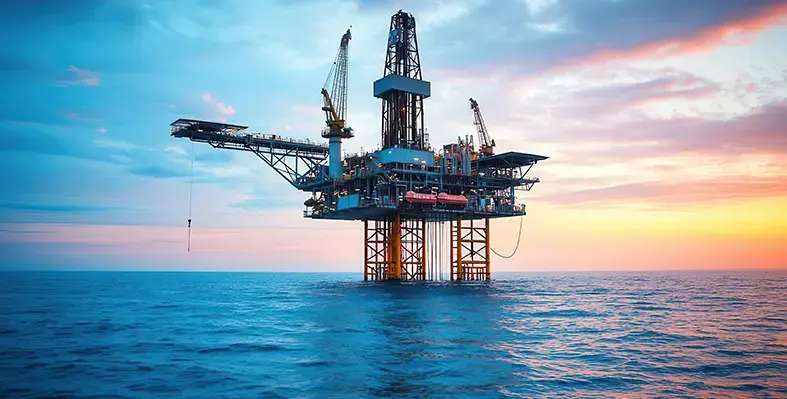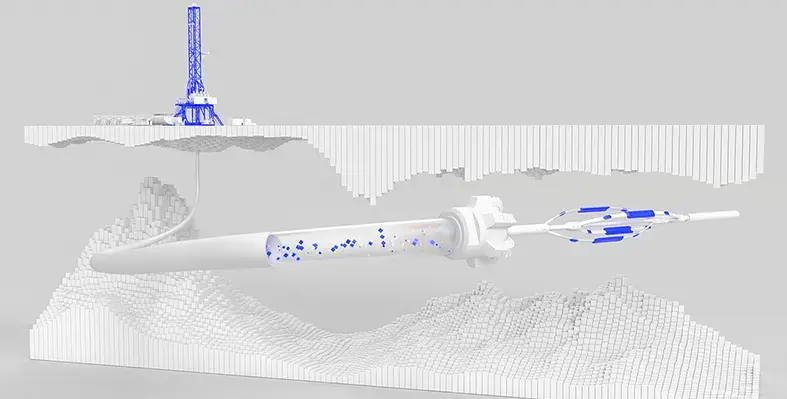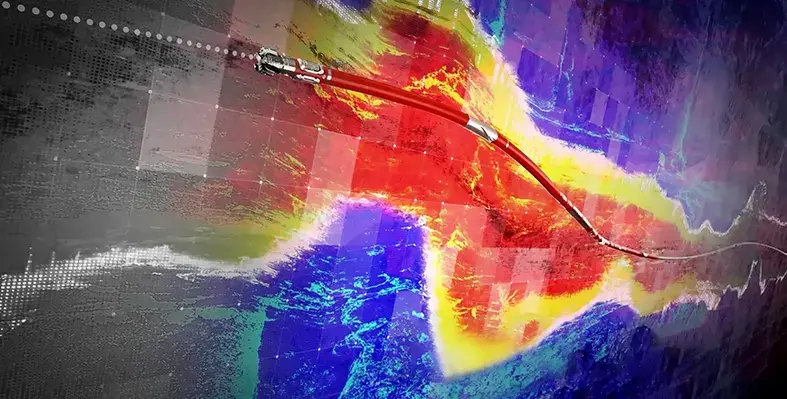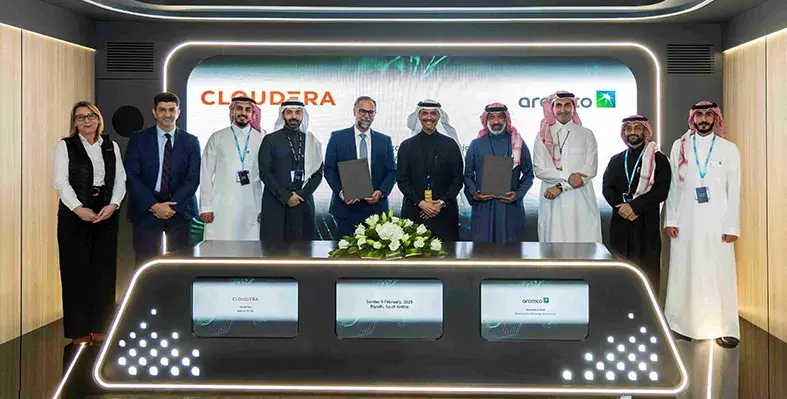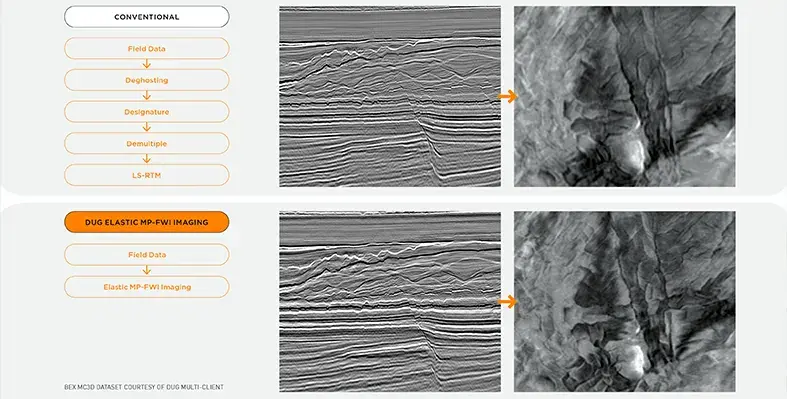
DUG Elastic MP-FWI Imaging is a unique approach to seismic processing and imaging. (Image source: DUG Technology)
Supercharge legacy data with DUG Elastic MP-FWI Imaging by using the entire wavefield, including all free-surface multiples and converted waves, as high-octane signal.
DUG Elastic MP-FWI Imaging is a unique approach to seismic processing and imaging which turns the traditional paradigm on its head. It replaces not only traditional processing and imaging workflows, but also the subsequent inversion workflow for elastic rock properties.
The traditional processing workflow involves the testing and application of dozens of steps such as deghosting, designature, demultiple and regularisation, which are all designed to overcome the limitations of conventional imaging. These workflows are complex, subjective, and very time-consuming due to their serial nature and they rely on many assumptions and simplifications. All of these issues impact the output data quality. The resulting, primary-only data then undergoes a similarly complex model-building workflow to derive an estimate of the subsurface velocity, which is used for depth imaging. Post-migration processing is performed before the pre-stack reflectivity undergoes another workflow to derive rock properties that feed into quantitative interpretation, also relying on simplifications of the actual physics. As a result of these workflows, projects can take many months to years to complete.
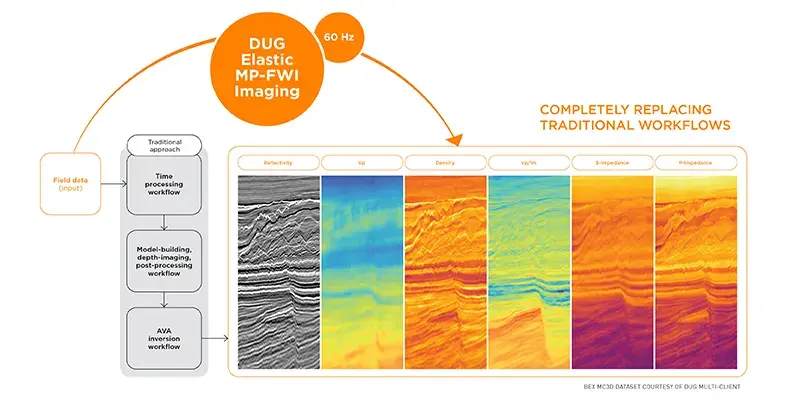 Multiples are normally considered as problematic noise, however they illuminate the subsurface in complementary ways to primary reflections. When imaging with primaries and multiples the subsurface is sampled far more completely, and with a wider range of angles — constraining the inverted reflectivity, rock properties and attenuation.
Multiples are normally considered as problematic noise, however they illuminate the subsurface in complementary ways to primary reflections. When imaging with primaries and multiples the subsurface is sampled far more completely, and with a wider range of angles — constraining the inverted reflectivity, rock properties and attenuation.
Elastic MP-FWI Imaging accounts for both compressional and shear waves, handling variations in seismic wave dynamics as a function of incidence angle, including in the presence of high impedance contrasts and onshore near-surface geological complexity. Multiples and converted waves are now treated as valuable additional signal, increasing sampling, resolution and constraining the inverted parameters.
The figure above shows a comparison of the reflectivity derived with DUG Elastic MP-FWI Imaging using raw field data, versus a conventional LS-RTM workflow using extensively pre-processed input. This legacy dataset was acquired in 2006 on the Australian North West Shelf. This region contains rapidly changing shallow velocity variations due to localised channel features and carbonates. The MP-FWI imaging results demonstrate an increase in spatial resolution — the channel features, reservoir flat spot, and complex faulting are sharper and more clearly delineated.
A complete replacement for traditional processing and imaging workflows is no longer a stretch of the imagination. Visit dug.com to see more outstanding DUG Elastic MP-FWI Imaging results.
Get in touch
DUG Elastic MP-FWI Imaging leaps entire workflows in a single bound, delivering unsurpassed imaging and high-resolution rock properties from field-data input. Superior outputs, in a flash!
Talk to us today. Contact






